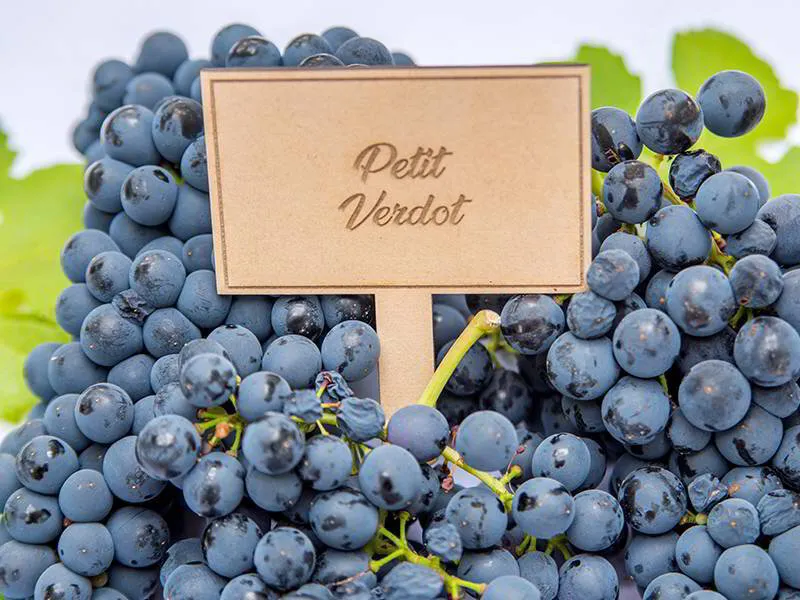You may know of Petit Verdot as one of the approved varietals for Bordeaux blends, where it joins Cabernet Sauvignon, Cabernet Franc, Merlot, or Malbec. Typically, it’s not a large component - usually 1-2%, if there is any there. It’s an interesting varietal, with a long history.
Although it is not known exactly where Petite Verdot originated, it is believed to have been in the warmer climates of Southern France. It is the offspring of Tressot and Duras, and it’s possible that these grapes were brought to the region by the Romans.
How it made its way to Bordeaux is unknown, but it pre-dates Cabernet Sauvignon in that region. Here, grown in cooler climates, this late-ripening, thick-skinned grape struggles to ripen, leading to its name Petite Verdot, or Little Green One, a not-so-nice reference to grape bunches that even when ripe will often include green, under-ripe berries. This tendency to be underripe gives flavors of dried or green herbs, tart blueberry and black cherry. And, the very small berries with thick skins provide a deep violet-black color. It is these components -- dried herbs, dark color and even tannins -- that Petit Verdot added to the Bordeaux blend. Even at very small percentages, Petit Verdot is an important element.
However, in the 1960s, wine tastes were moving away from what Petit Verdot provided, favoring instead more fruity, juicy and structured wines. Many Petit Verdot vines were torn out in Bordeaux to be replaced by the more popular and reliable Cabernet Sauvignon & Merlot vines.
It wasn’t until the 1980s that Petite Verdot emerged again, but this time in the New World, particularly in California and Australia. There, planted in warmer areas, the grape produced wines that were more voluptuous and juicy with distinct ripe blueberry, plums, blackberry and black cherry flavors, often bordering on jammy, with aromas of violets. With cooler nights, they also retain a good acid for a balanced wine. Indeed, Petit Verdot wines can be highly age-worthy.
You will now find Petite Verdot grown for not only blends, but also for stellar single varietal wines from the United States (California and even Texas!), Australia, Spain, South Africa, Chile and Argentina.
Uncorked features a 2015 Petit Verdot from Sullivan Vineyards this month in the Uncorked Guilt Free Red Wine Club as one such single varietal Petite Verdot from California -- Rutherford, Napa to be specific. It’s a big, bold wine, with notes of fresh plum and cherry, and even some chocolate, as one would expect from a warmer climate wine. But, it has more in synch with its French Bordeaux cousin, as 2015 had a brief cold spell after fruit-set and a reminder of the “little green one” again with some under-ripening. There are some distinct mineral notes in the wine, again, reminiscent of a more French-style wine. On the Sullivan Vineyards website, the wine sells for $130, but at Uncorked it is listed at $80.
It will also be featured in the next Virtual Wine Tasting on January 29, 4:30 - 5:00pm.

